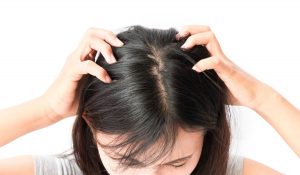When it comes to playing around with other kids, children are often careless about who they interact with, which can often lead to them getting head lice and dandruff in some situations. In some countries, head lice are quite common in children since they can easily “jump” from one person to another, especially those nearby.
While there are plenty of ways to remove head lice for good, prevention is still a better choice than spending on prescription shampoo and other treatments. So what are some ways of removing head lice and dandruff? How do you know if someone has head lice? Here’s what you’ll need to know in getting these agile and annoying parasites off your son or daughter’s head.
Head Lice and Dandruff
But before we can discuss preventive measures, we have to know the tell-tale signs that someone has head lice and dandruff.
Head lice are parasitic insects that live off their hosts for sustenance. Just like ticks and mosquitoes, lice will feed off blood from their hosts. Because children are usually playing close to each other, lice can easily spread, especially in classrooms where most students have seated just a few feet or inches away from one another. Most parents have to keep an eye out for head lice that are female since they lay eggs close to the scalp or attached to the base of hair strands.
Contrary to what most people think, head lice is not a matter of personal hygiene and can spread to those who are practicing good personal hygiene. Several claims say that lice do not cause any serious health complications, but there are also cases where a heavy infestation of lice could lead to anemia. But the study was later debunked when other factors came into play.
Dandruff can also be a problem for children, especially when this is one of the more apparent things that other children can see. Having dandruff can often be an indicator of bad personal hygiene, which can cause bullying at school. There’s really no one cause to dandruff, but most accounts are caused by an oily and greasy scalp, not taking care of your hair and scalp, and a fungus known as Malassezia that lives on the skin. In some cases, dandruff can be mistaken eggs for lice and vice versa, which can often lead to other children alienating your child if you don’t do anything about it.

Symptoms to Look Out For
When it comes to head lice and dandruff, the most common symptoms that you’ll have to look out for are:
- Constant itching – When you have a lice infestation or dandruff, it’s hard to leave your scalp alone. Itching caused by lice is often related to an allergic reaction from the bite, which can cause inflammation in the general area. Sometimes, someone might have lice, and they won’t notice it until four to six weeks in.
- The sensation of crawling on your scalp – Most toddlers and children with lice will feel a “creeping” sensation on their scalp or their hair. This is caused by lice moving to different locations to evade being crushed by nails and looking for new areas to suck blood.
- Inability to sleep – When your child is constantly scratching their head, this can often lead to them not being able to sleep, leading to a plummet in their productivity if they don’t get enough sleep.
- Red bumps on your head – When a child will keep scratching their scalp, this will lead to bumps and sometimes even bleeding if your child scratches your bumps too hard.
- Flaky and dry scalp – When it comes to dandruff, your scalp will become flaky. These “flakes” will often fall to your shoulders, eyebrows, and hair in the body.
So what are some ways of preventing dandruff and lice? Here are some tried and tested ways of removing lice and dandruff for good:
Proper Medication
One great way of removing head life for good is by applying specialized prescription medicine through medicated shampoo, creams, and over-the-counter FDA-approved drugs. Still, you shouldn’t just rely on your judgment, and you should seek professional help when needed. The type of medicine you will need to apply will depend on the severity of the infection and your child’s age.
Normally, fungi will usually form when the scalp is moist and oily. One great way of keeping your scalp and hair dry while mitigating dandruff’s likelihood of forming is by using a hair blower diffuser that can easily keep your scalp soothed and your hair relaxed.
Combing
One of the traditional means of removing lice and dandruff is using a finely-bristled comb to remove lice. You’ll need to do the following:
- Find a well-lit room.
- Rinse your child’s hair with water and start dividing it into different sections
- While you’re in one section, run the comb through the scalp to the ends of your hair.
- Tap the comb on a small container that’s filled with warm water or hot oil that can help call off the lice and nits.
- Repeat until all the sections are covered.
There are even more ways of removing lice and dandruff from your hair. The bottom line? Prevention is better than having to spend more on prescription medicine and making your child miss out on much-needed classes because they got a lice infestation.

